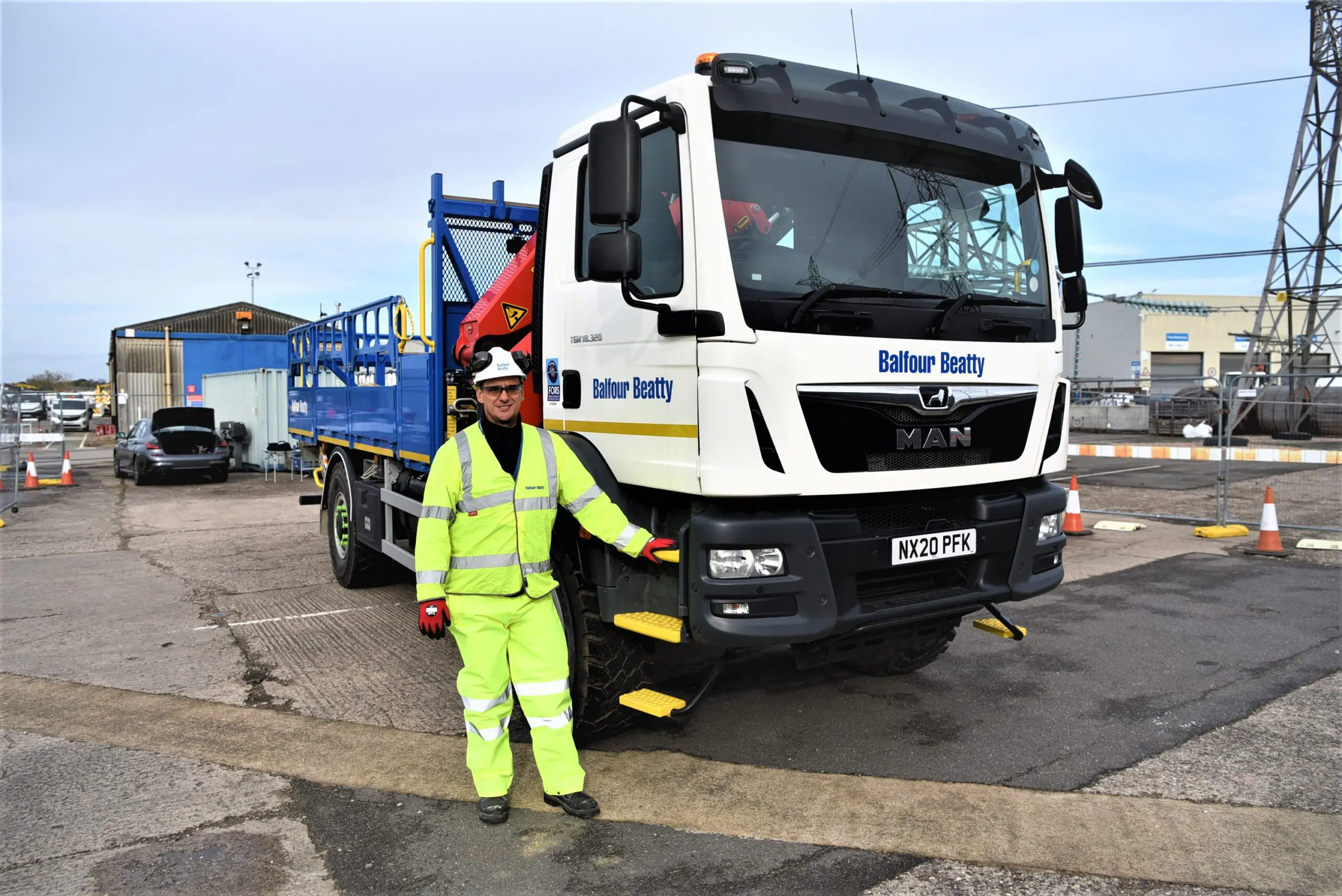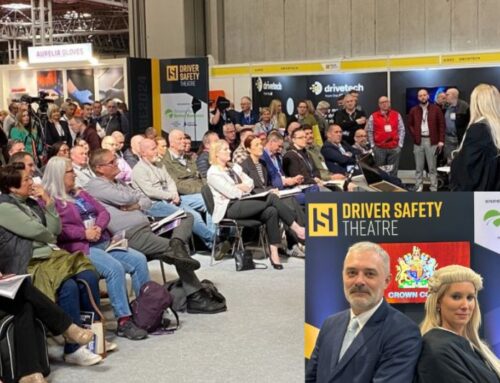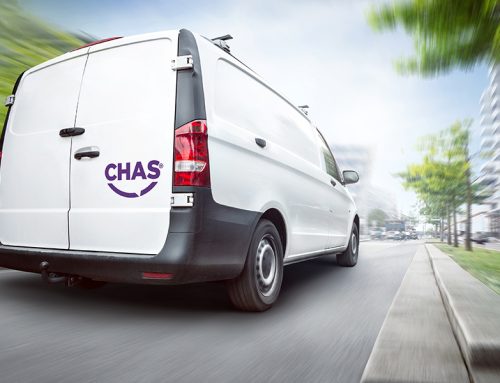Balfour Beatty is a leading international infrastructure group, responsible for designing, constructing and maintaining railways, roads, power infrastructure and much more.
We talk to Adrian Wanford, Balfour Beatty’s Group Transport Compliance Manager about how he manages fleet safety.
DfBB: Tell us a little about the size and diversity of the fleet Adrian.
Adrian: We manage 7500 vehicles in the UK for the Balfour Beatty business including cars, LCVs, and HGVs. We work across many different industrial and infrastructural sectors, so the vehicles we manage are not run of the mill standard vehicles and include road maintenance and Traffic Management commercial vehicles. They are all managed centrally by my team which is based in Derby but has representatives across the UK. All vehicles are governed by the same centralised policies and safety-focused approach.
DfBB: Where do you start in ensuring compliance and safety across such a large and diverse fleet?
Adrian: Balfour Beatty has operated an internal fleet capability since the 1970’s with safety & compliance at the heart of its activities. When I took on the role as Group Transport Manager in 2013, I reviewed all our policies and processes with a view to ensuring we were leading the industry as part of Balfour Beatty’s Zero Harm campaign that was launched in 2012
All our policies and processes are consistent across the whole fleet, and we divide our areas of responsibility into vehicle, driver, and governance.
We have a central Driver Risk & Fleet Compliance team based in Derby covering licence validation, telematics, training, drivers’ hours, defect reporting, tolls, fines, vehicle maintenance planning and records, plus accreditations, such as FORS and Van Excellence, plus Balfour Beatty are one of the founding CLOCS Champions. Our industry leading Permit to Drive scheme applies to all our employees who drive on company business. When you log in, it checks your licence entitlement, but also requires a hazard perception test, your likely mileage, vehicles you’ll be driving, any insurance claims history, and conviction claims history. All of that is processed into a risk rating. The risk rating then dictates what training that driver might need.
We see high mileage as a specific risk factor in its own right, so some drivers will receive more support simply because they have to drive a lot.
DfBB. So tell us about the driver training that you offer.
Adrian: We tailor the training to the driver. So that can include classroom training, one to one coaching, or a variety of different methods. We use eLearning modules, which complement our in-person workshops. The eLearning modules take 45 minutes and they’re applicable to HGV drivers and LCV drivers. They cover fitness to drive, pre- use checks, load security, speed limits, breakdown protocols, accident procedures, security and other basic compliance areas. That’s a foundational layer of training. You can’t hold drivers accountable if you don’t tell them what you expect.
DfBB: So policies and training make a great start, but how do you measure their impact on the fleet?
Adrian: Monitoring and enforcement is important. We have 11 people across the UK who do regular gate checks and vehicle checks. They stop drivers on the way in, or on the way out of depots or sometimes as they return to base at night. They check that the vehicles are roadworthy and that they are the correct weight. We invested in a suite of portable weigh pads so that we can check vehicles are appropriately loaded. We have records going back nearly 10 years capturing this information. When we first started weighing vehicles, LCVs in particular, our suspicions were confirmed. There were a lot of situations where we had to intervene. Wherever there was space people would try to fill it. Based on the data we built up from the mobile weight pads and gate checks, we mandated on-board weighing indicators across the fleet to support our drivers in ensuring they don’t overload. You must check and enforce policies in order to get results. The gate checks are an excellent barometer of vehicle maintenance and defect reporting.
DfBB: Do you find attention to proper loading, weight restrictions and roadworthiness brings other business advantages beyond safety?
Adrian: Absolutely. There is a substantial fuel benefit in checking loads, as drivers are not carrying around unnecessary kit. And of course, pre-use checks catch faults early which protects the vehicle and the driver and lowers costs. So ensuring that those pre-use checks are effective is important.
DfBB: If these checks are carried out regularly, are you always looking for the same thing?
Adrian: We do run campaigns on specific issues. For instance, recently we’ve been looking at load security. We’ve just launched our own loading sheets for use with smaller vehicles and LCVs. They are both load-bearing and load rated, so they cover the load and secure it.We were picking up during gate checks that, on occasions, loads weren’t secured properly. So we wanted to give our drivers a universal solution.
DfBB: Was that a that substantial investment for the load sheets?
Adrian: The first batch of 200 was an investment of £50,000 and we anticipate another two similar size batches to satisfy the requirement across the business.
DfBB: What other campaigns have you run?
Adrian: We’ve focused on pre-use checks. Over the last year we’ve migrated from paper to the TruChecks system, from TruTac which provides our tacho analysis. It’s a really impressive piece of kit.
Each registration plate is linked to a specific template, which guides the driver through the appropriate check for that vehicle and all of its ancillary equipment. The app is the easy part. It’s perfecting the process of what happens next which is challenging. There is a hierarchy of people who get advisory defects notes, including the workshop. You need buy-in across the organisation to get others to prioritise the appropriate action.
DfBB: Do you use telematics as a safety intervention?
Adrian: Balfour Beatty has invested in Telematics for over 10 years. Our focus has been around driver behaviour and not just tracking vehicle locations and we integrate the data from telematics into our Permit to Drive scheme. We generate exception reports on speeding, braking, harsh acceleration, idling and inappropriate cornering etc. Reports are generated for the business units; we focus on trends, and we benchmark data.
We don’t name individuals. However, we do measure depot by depot performance and the business units in order to motivate managers to encourage their drivers to improve. When you look at individual events, it can be misleading – for instance, harsh braking can be a result of distraction or remarkable near miss avoidance. Instead we tend to look at the overall trend in driving behaviour. We focus on speed by speed zone, and we find this tends to remove a lot of harsh events because you are encouraging smoother driving, with more time for anticipation and reaction. Generally when people drive smoothly, they drive more safely and with better fuel efficiency.
DfBB: Do you try to reduce the amount of mileage across the fleet?
Adrian: As part of Balfour Beatty’s sustainability road map we very much focused on vehicle journey necessary and optimised travel. For example, I used to have an extremely high mileage personally, these days, with the systems we’ve got, I can sit at my kitchen table and see all I need to. That does help to reduce the amount of travelling that people are required to do and if we can do fewer miles, we have less risk exposure. We do still need to have a presence at times, but we target our resources and effort now. We attend HGV contracts quarterly and review reports with contract seniors – but now we do every second or third meeting on Teams. Continuous and effective management control doesn’t mean you have to be there in person every time.
We also have safety stand-down days on contracts (sometimes called ‘boots on the ground’). Everyone meets at one venue, and we present safety updates on the contract. While we are presenting inside, some of the team will be checking tyres and vehicles in the car park and we’ll feedback their findings to the audience in real time.
DfBB: is it possible to have an effect on subcontractor risk?
Adrian: We cascade all our safety protocols to subcontractors, and they are included in our stand-down days as well. We also support by compliance audits and assessments.
DfBB: You mentioned FORS accreditation. What does that offer you?
Adrian: Balfour Beatty is FORS Bronze accredited across its business in the UK with some specialist contracts silver & gold accredited as well.
In terms of safety accreditation, our direction of travel is to attain the DVSA Earned Recognition standard. It’s a government endorsed standard which has credibility. It validates compliance with regular checks, and monthly KPI reporting, not just the annual audit. Our goal is to achieve Earned Recognition in 2023.
Managing Fleet Safety – the benefits
DfBB: What benefits have you seen from this careful attention to fleet safety?
Adrian: We are still seeing incident rates come down steadily every year after more than 15 years of rigorous fleet management. It’s about continual improvement.
In 2018 I won Fleet Manager of the Year at the Commercial Fleet Awards, which was lovely, but also really an endorsement of the work of the whole team.
DfBB: So why is road safety so important to you?
Adrian: It fits with our ‘zero harm’ strategy. We want to send our colleagues home in the same or better condition than they came to work in. Across the whole business, we consider we have 10 fatal risks. Things like working at height, working with electricity, or working underwater. Driving is one of those fatal risks.
We can’t control the entire environment around the driver. However, we do everything possible to mitigate the risks that they face or present.
DfBB: Finally, decarbonisation is on everyone’s agenda. What does that look like for Balfour Beatty?
Adrian: We’ve focused initially on our company car fleet because they are the most numerous and also the vehicles for which we can most readily find a commercially sustainable solution. We set the target to remove all traditional Diesel ICE cars from the road by the end of 2024.
In addition, our Van/LCV fleet targets are as below:
- 20% to be AFV by end of 2023
- 40% by end of 2025
- 100% by end of 2030
Obviously we are looking to accelerate this if we can.
For HGVs it’s more complex and is impacted by credible alternatively fuel vehicle solutions.
Currently we are trailing hydrogen dual-fuel HGV innovation on our road’s maintenance and Hs2 contracts.






